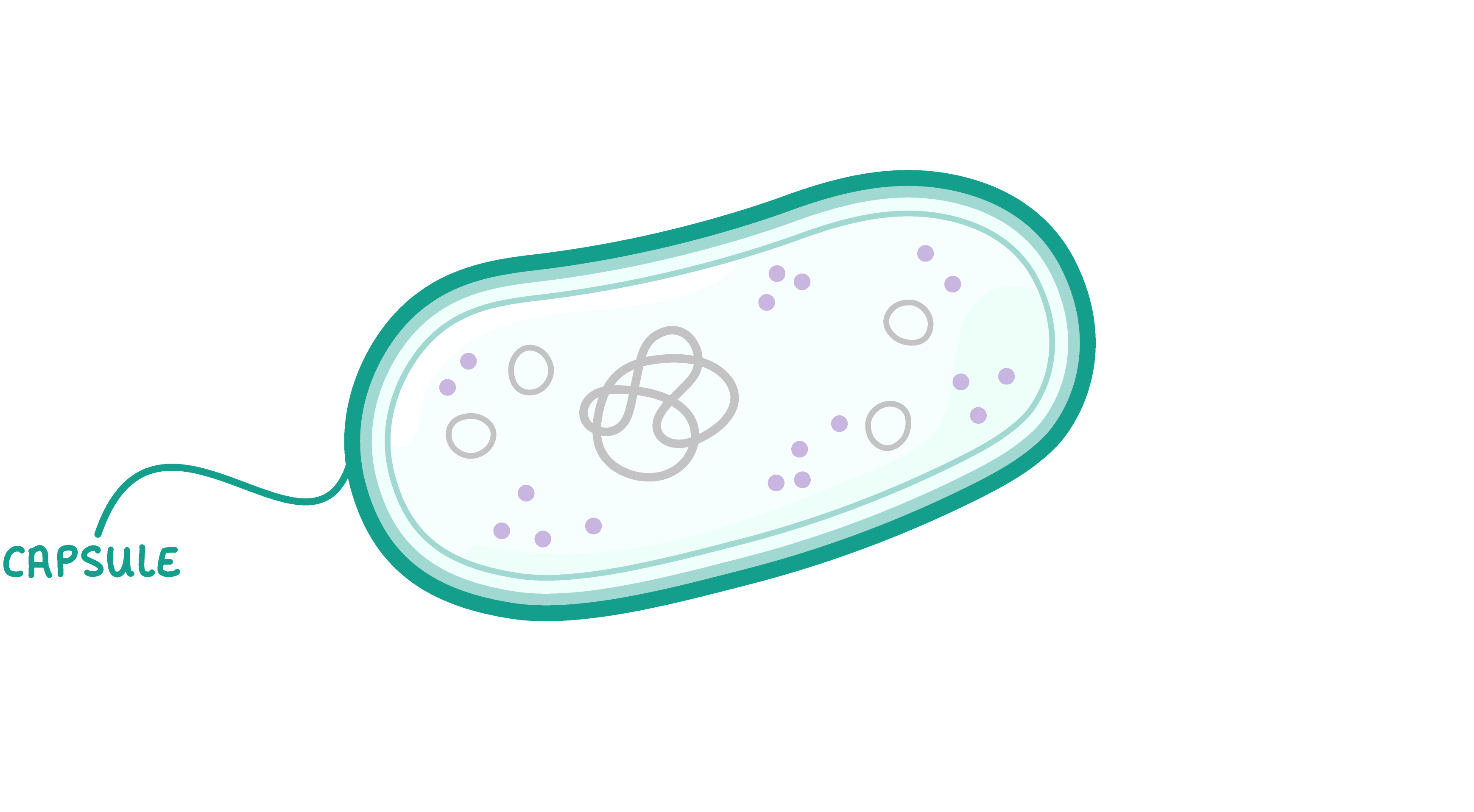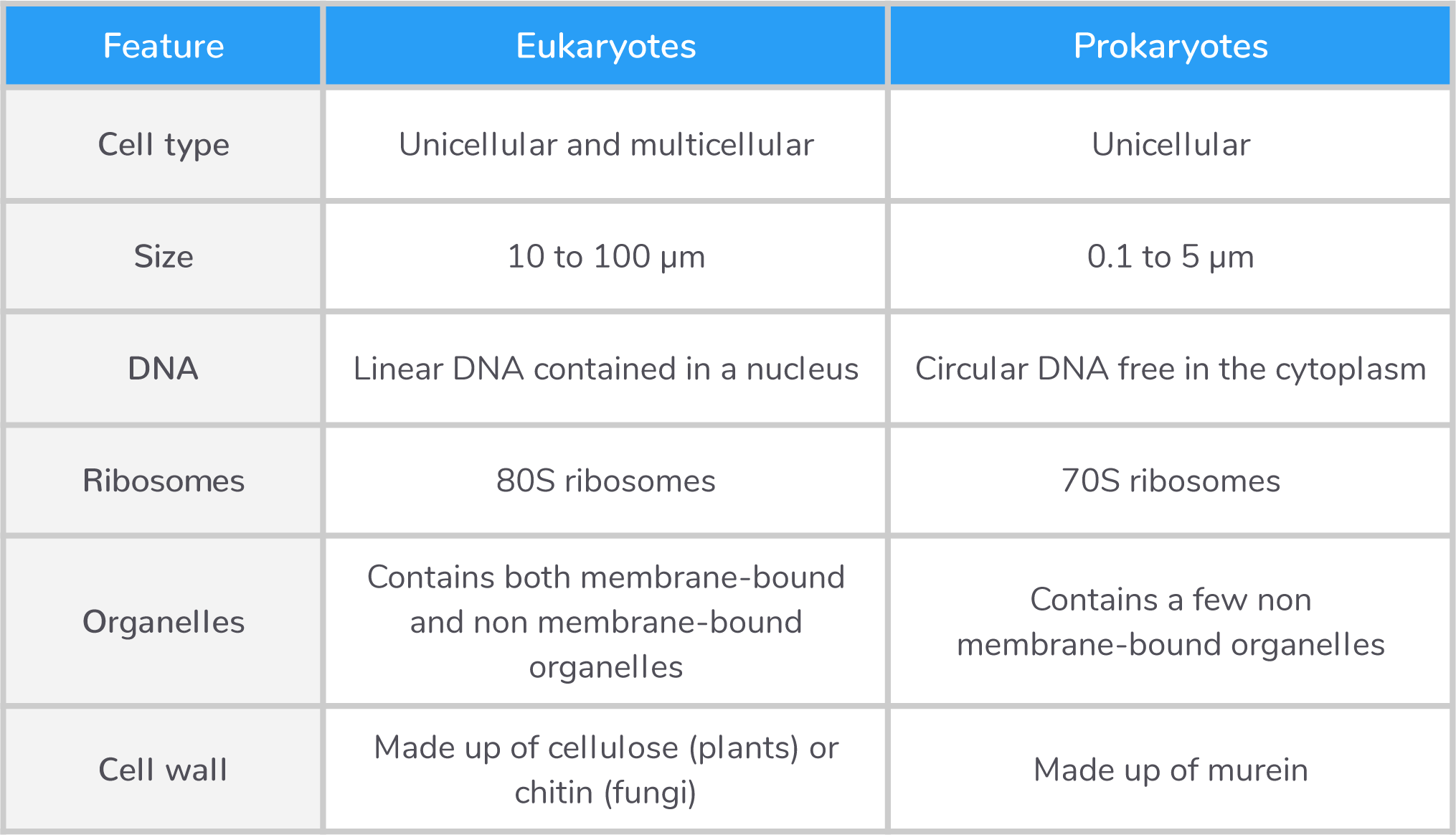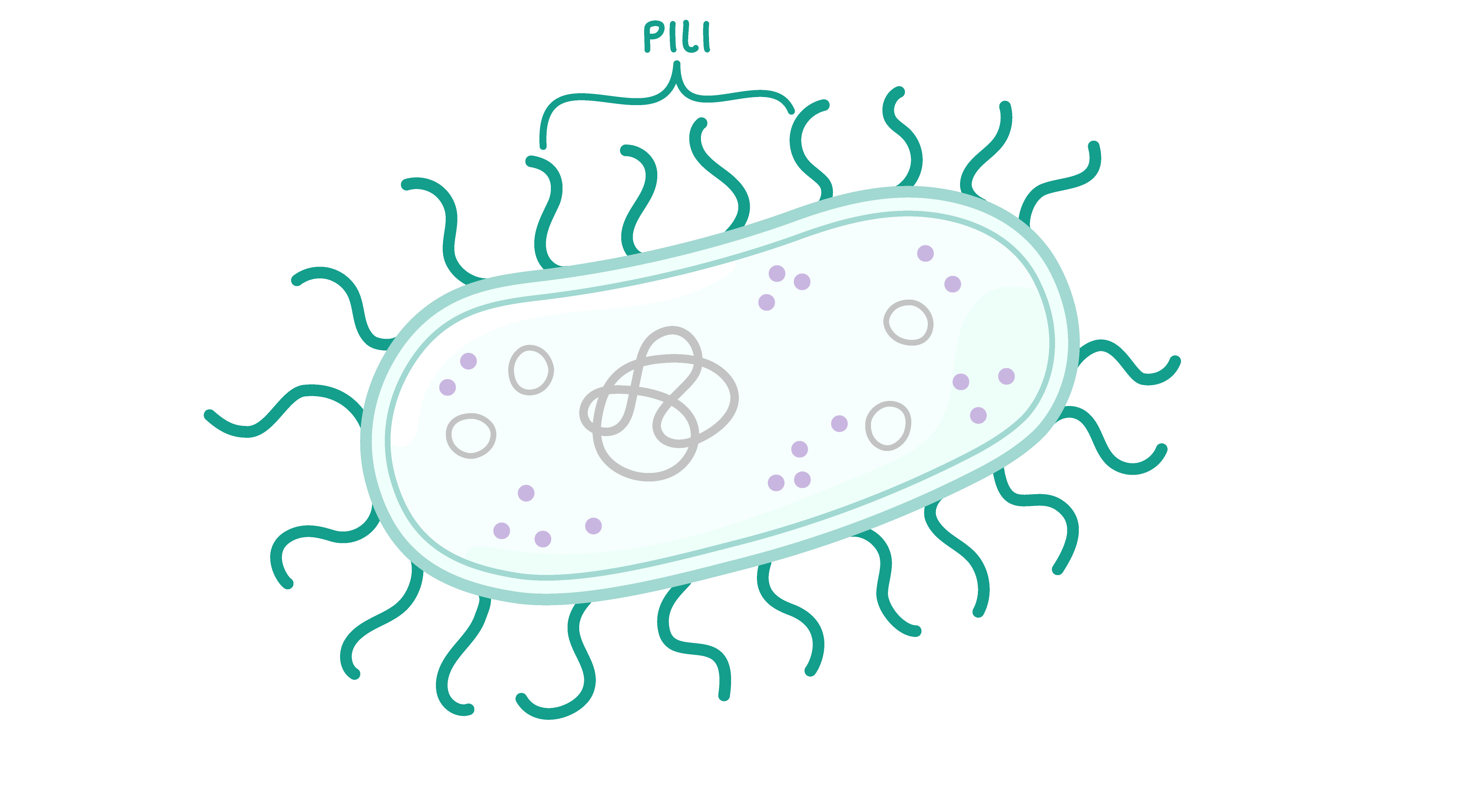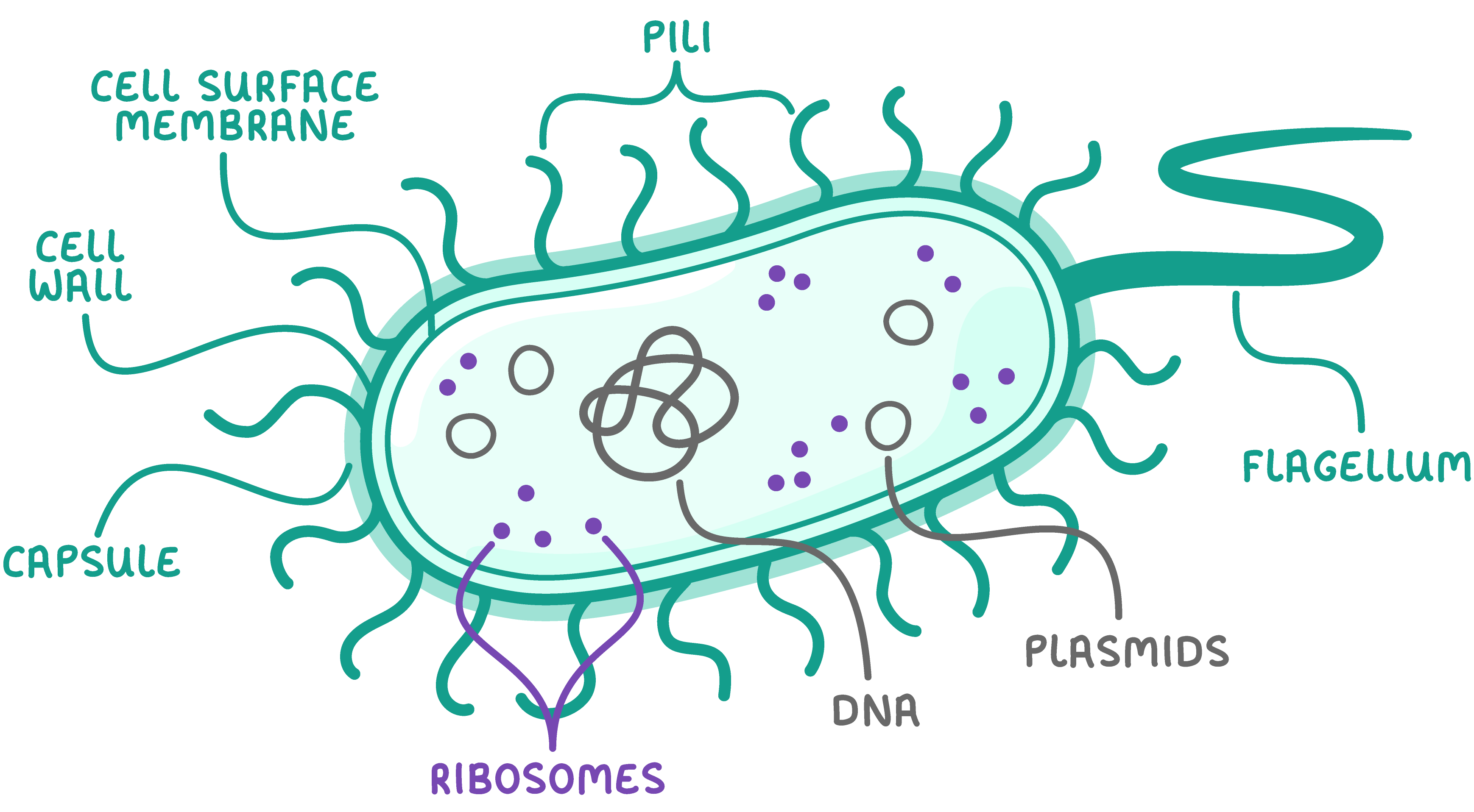Prokaryotic Cells
This lesson covers:
- The structure of prokaryotic cells
- The functions of their cell parts
- The similarities and differences between eukaryotes and prokaryotes
Prokaryotes Prokaryotes are single-celled organisms, so consist of a single prokaryotic cell. These cells are much smaller than eukaryotic cells and do not contain a nucleus or other membrane-bound organelles. |
The diagram below shows the basic structure of a prokaryotic cell.  |
How prokaryotic cells differ from eukaryotic cells:
|
Prokaryotic organelles Prokaryotic cells may also contain additional organelles such as capsules, flagella and pili. |
 Some prokaryotes (e.g. bacteria) have an extra layer around the cell wall known as a capsule. This structure is made up of polysaccharides and protects the cells from attack by antibiotics or white blood cells. |
Comparing eukaryotes and prokaryotes  |


